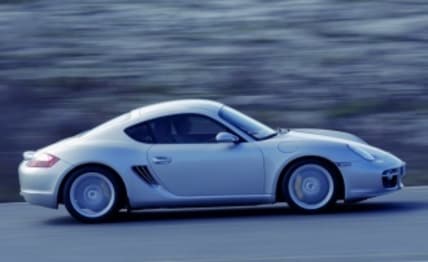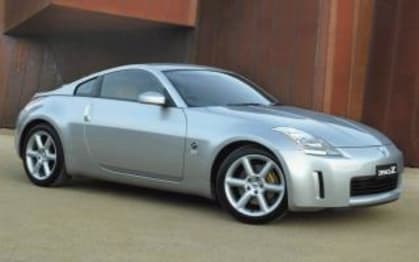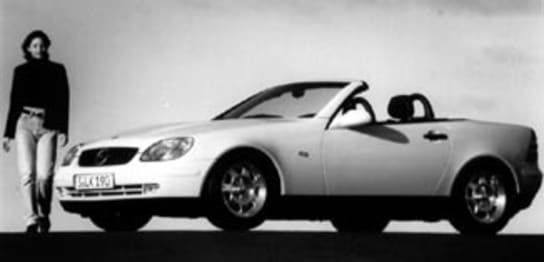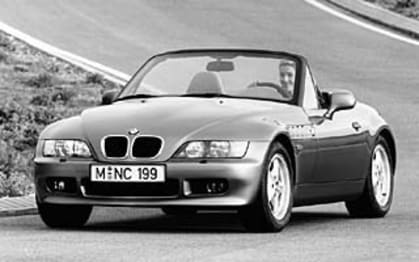
Used Porsche Boxster and Cayman review: 1997-2015
- Porsche Cayman
- Porsche Boxster
- Porsche Boxster 2014
- Porsche Cayman 2006
- Porsche Cayman 2007
- Porsche Boxster 2007
- Porsche Boxster 2008
- Porsche Boxster 2006
- Porsche Cayman 2008
- Porsche Cayman 2009
- Porsche Boxster 2009
- Porsche Boxster 1997
- Porsche Boxster 2010
- Porsche Cayman 2010
- Porsche Boxster 2012
- Porsche Cayman 2013
- Porsche Boxster 2013
- Porsche Cayman 2011
- Porsche Cayman 2014
- Porsche Boxster 2015
- Porsche Cayman 2015
- Porsche Boxster 1998
- Porsche Boxster 1999
- Porsche Boxster 2000
- Porsche Boxster 2001
- Porsche Boxster 2002
- Porsche Boxster 2003
- Porsche Boxster 2004
- Porsche Boxster 2005
- Porsche Boxster 2011
- Porsche Cayman 2012
- Porsche Cayman Reviews
- Porsche Boxster Reviews
- Porsche Reviews
- Porsche Convertible Range
- Porsche Coupe Range
- Convertible
- Coupe
- Porsche
- Sports cars
- Prestige & Luxury Cars
- Used Car Reviews
What we like
- Ample road grip
- Practical storage options
What we don't
- Earlier models down on power
What we like
- Ample road grip
- Practical storage options
What we don't
- Earlier models down on power
Porsche Boxster roadster and Cayman coupe are the same vehicle apart from the folding roof in the former and the fixed on in the latter. Cayman didn’t go on sale until 2006, nine years after Boxster.
Interestingly, the Boxster and Cayman share quite a few of their front-end components with the Porsche 911. At the rear they are quite different machine visually, though there’s still a family resemblance.
Boxster’s roof design is simply brilliant in that the roof acts as its own cover when the top is open. The roof can be left down even if the weather is threatening as it can easily be powered closed at a red traffic light.
Unlike some 911s, the Boxster and Cayman are strictly two-seaters. Shoulder room is plentiful for all but the widest of occupants. Unless your are very tall in the body you’re well isolated from buffeting with the roof down.
These pure sports machine delight in being pushed hard and fast
They're mid-engined sportscars, meaning the engine is installed within the wheelbase, on this case just behind the cabin (Porsche 911’s engine is behind the back wheels). A mid-engine layout provides the best in chassis balance.
These pure sports machine delight in being pushed hard and fast. Their naturally-aspirated engines are responsive, the gearbox is a delight to use, road grip is very high and the feel through the steering wheel and the seat of the pants is makes them easy to control.
However, if the tail gets out too far you'll need quick reflexes to correct it. These days electronics aids can save you from over-reaching; they can be detuned should you wish to make your own decisions, particularly for track days. An advanced driving course is recommended if you really want to get the best from any Porsche.
The Boxster and Cayman are surprisingly practical for their class, with luggage compartments front and rear. So can work as daily drivers and holiday trips - way to go!
The Boxster arrived in Australia in January 1997. It received minor upgrades in October 1999, August 2001 and August 2002, then a major upgrading in February 2005. The latter, tagged the 987 series, replaced the previous 986 models. This was upgraded again in November 2006, November 2007 and March 2009.
An all-new Boxster, the 981 (Porsche model number are mysterious things!) came out in June 2012, followed a by a new Cayman in May 2013.
The Boxster was initially criticised for being down on power, mainly due to its smallish 2.5-litre, flat-six engine. That problem was solved in 1999 when a bigger 2.7-litre unit was installed. Even better news was the fitment of a 3.2-litre engine into the models called the Boxster S and Cayman S.
Displacement was increased to 3387cc in 2006 and to 3436cc with the introduction of heavily revised cars in September 2009. The standard Boxster went up to 2.9 litres. The new powerplants featured a direct injection fuel system for added performance and lower emissions. Torque came in sooner and remained constant over parts of the rev band.
It's a prestige sportscar aimed at those who like to drive hard and fast
While the previous engines needed 4000 revs to really come on song, the newer units really begin pull strongly from 3000. Thus making them simpler to live with in heavy-duty daily driving.
Boxster initially used either a five-speed or six-speed manual gearbox or a five-speed Tiptronic automatic. From the 2009 upgrade a seven-speed dual-clutch PDK gearbox was installed.
Insurance ratings are generally moderate for what is, after all, a prestige sportscar aimed at those who like to drive hard and fast.
Porsche cars are long established in Australia. The dealer network isn’t huge, but it’s well organised and we seldom hear complaints about parts or service availability. They are not cheap, but not outrageous for what you get.
A Porsche Boxster that’s always been serviced and repaired by an official dealer is relatively common and is the one to aim for. You will probably be asked to pay more because of its history. May we suggest you keep up the servicing to make your car a sound investment?
What to look for
Look for severe tyre wear, heavy brake dust buildup on the wheels and suspension, and for repairs to the body.
Check the interior for signs of mistreatment. Look under the floor mats for signs of dampness caused by a Boxster being caught out in the rain.
The engine should start easily, idle smoothly virtually from the moment it kicks over and have throttle response that’s all-but instantaneous.
Heavy operation of the clutch is likely to mean it’s due for an overhaul. Not a complex job, but there are no cheap repairs on a Porsche.
The gearbox should be light and easy to use, with no noises at any time, even during the fastest of gearchanges.
Rust is very unusual and almost certainly means the car has been badly repaired after a crash.
These cars are well engineered and solidly built and unless poorly repaired after a crash should last well. If you suspect collision repairs it’s wise to have it professionally inspected.
Pricing
| Year | Price From | Price To |
|---|---|---|
| 2015 | $42,020 | $113,410 |
| 2014 | $37,400 | $91,080 |
| 2013 | $40,260 | $57,750 |
| 2012 | $31,020 | $55,440 |
| 2011 | $28,380 | $52,140 |
| 2010 | $27,830 | $51,260 |
| 2009 | $17,930 | $46,640 |
| 2008 | $25,850 | $36,410 |
| 2007 | $24,970 | $34,980 |
| 2006 | $24,970 | $34,980 |
Pricing guides
Range and Specs
| Vehicle | Specs | Price* | |
|---|---|---|---|
| (base) | 2.7L, PULP, 5 SP AUTO | $25,850 – 31,900 | 2006 Porsche Cayman 2006 (base) Pricing and Specs |
| S | 3.4L, PULP, 5 SP AUTO | $29,040 – 34,980 | 2006 Porsche Cayman 2006 S Pricing and Specs |
$39,999
Lowest price, based on 3 car listings in the last 6 months















